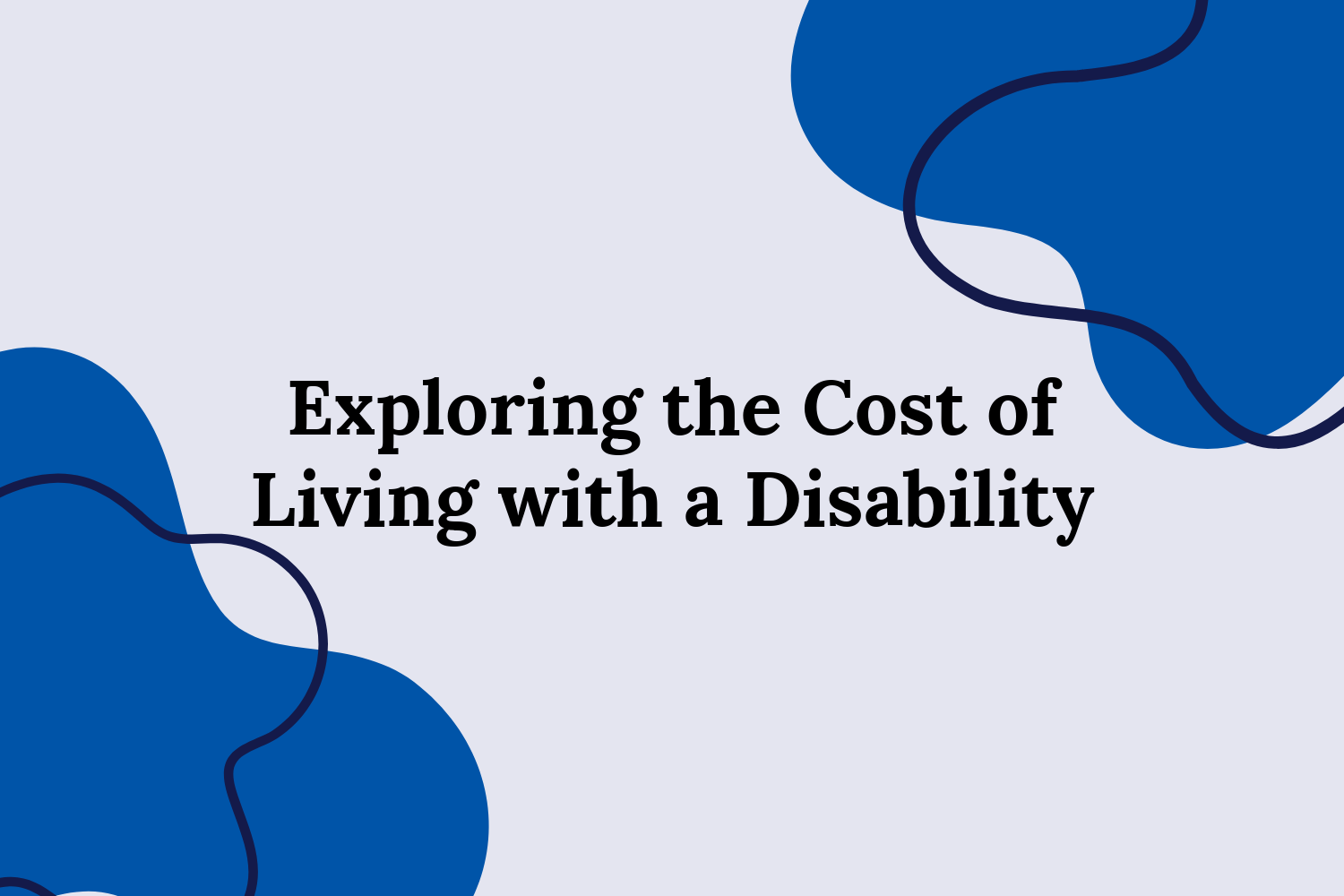Living with a disability does come with additional costs compared to people without disabilities. That is a statement that most people can agree with. However, with the availability of public health insurance, community programs, and income assistance, fully acknowledging the costs of disability can be difficult if you do not live with a disability and interact with these programs.
This is inspired by the consultations of the Canada Disability Benefit which was revealed to be a maximum $200 a month and based eligibility on income and Disability Tax Certificate. The disability community is disappointed with the federal government over this, especially when assistance from provincial governments are below the poverty line. Disability Without Poverty does a #BetterTheBenefit campaign to educate and rally people to advocate for a better benefit and it is more than just financial consideration that governments need to change.
The key considerations are the ability to access and apply for the benefit, not tying the benefit to household and spousal income, consistent eligibility with provincial and territorial governments, and considering the individual needs of disability. The concepts of financial independence, dignity, and individual access needs are crucial to how benefits, supports, and services are designed to meet the needs of persons with disabilities. This is all surrounded by the realty that there are additional costs to disability.
There are three (3) areas that can be costly for people with disabilities.
-
Time
-
Financial
-
and Energy
These 3 areas are interconnected and can vary based on individual experience and needs.
Let’s say you cannot drive due to your disability but you are able to take traditional public transportation. A public bus will take longer than driving to the location. It is construction season and mobility is something you have to consider as you use a cane and unsteady on your feet at times. So you take the time to look up current projects around the area. After researching, you realize that the bus you were going to take will have a detour with the next stop near construction on the opposite side making the trip difficult. So, you look at different bus routes nearby and find one that will get you the closest with reliable sidewalks available but it is going to be an additional 20 minute walk (normally 10 minutes for people without mobility concerns and fatigue) from bus stop to location on top of an hour bus ride. You have to consider the additional time of getting ready to leave which is based on your current energy. Since it is a combined 3 hour commute both ways, you know from past experience that you will not have the energy to cook and will not be able to meal prep due to limited groceries as you are waiting until the next sensory-friendly hour at your grocery store which is in a couple of days. You notice that a fast food place that meets your dietary needs is on your walk back to the bus which means that you will have to spend more money on food than you anticipated that month.
Let’s explore those areas in more detail.
Time
Time can be viewed in two ways, the amount of time needed to do a task and time being wasted or inflexible due to inaccessibility or accessible options available. The amount of time needed to do a task differs from person to person but it also includes additional tasks that take more time to do the same task. This would be your research of construction projects in the area as people who do not have mobility needs can go on uneven terrain. The time being inflexible would be only able to shop during sensory-friendly time at the grocery store as the environment is usually overwhelming. None of these tasks are negative but they take more time to execute compared to people without disabilities.
Money
Money is the most obvious area when considering cost as it comes with a price tag. In our example, extra cost of food and the cost of cane equipment are the most obvious ones. However, for people with disabilities, it can include personal and healthcare support, devices, equipment, private care, dietary needs, medications, and so much more. This is the easier cost to be accountable to due to numerical amounts and it is a critical stress for people as their needs can come with a financial cost.
Energy
Energy is the most unseen cost of living with a disability but is likely one of the most detrimental costs of day-to-day life. The amount of energy is usually limited due to disability. Adding additional tasks to simple tasks such as researching to doing more of a task due to accessible options like sidewalks and groceries can be draining. It is an area that tends to go unnoticed as requirements of additional paperwork, appointments, and tending to needs are quite high.
So, how to make it easier for persons with disabilities
Being part of the movement towards an accessible society can reduce some of the cost. There are still individual needs that would need support so while it is important, individual needs should not go unnoticed.
Give as much information as possible. Be open for questions or have a FAQ about accessibility to help with research. The more information a person has (and the easier to obtain), the experience will likely be better and take less time.
Be aware of conversations around benefits and supports costs. This is a reoccurring discussion and disability issues tend to slide under the radar in political conversations to downplay how many people really need this support. Keep the conversation going.
Most of all, kindness and respect. Just like you, people with disabilities are just trying to get through their day with their needs met and some fun. Because of how difficult supports, services, and environments are with disability and accessibility, having kindness and showing respect can go a long way.

